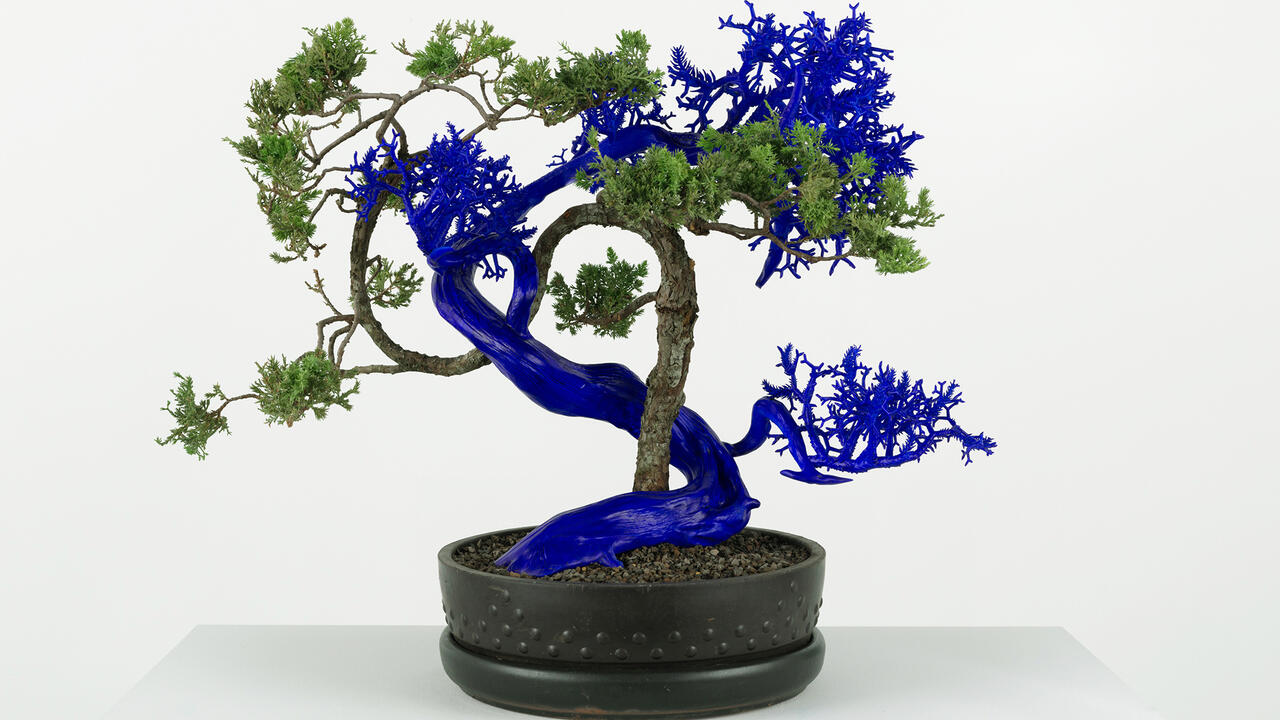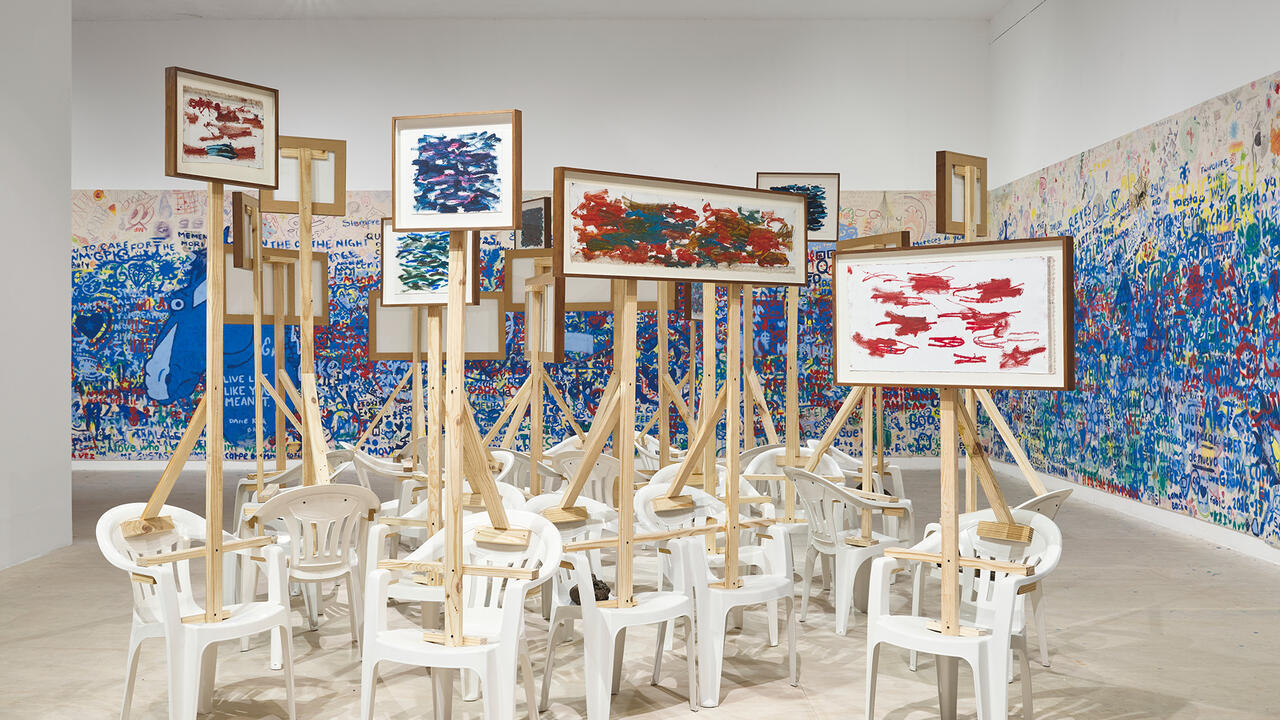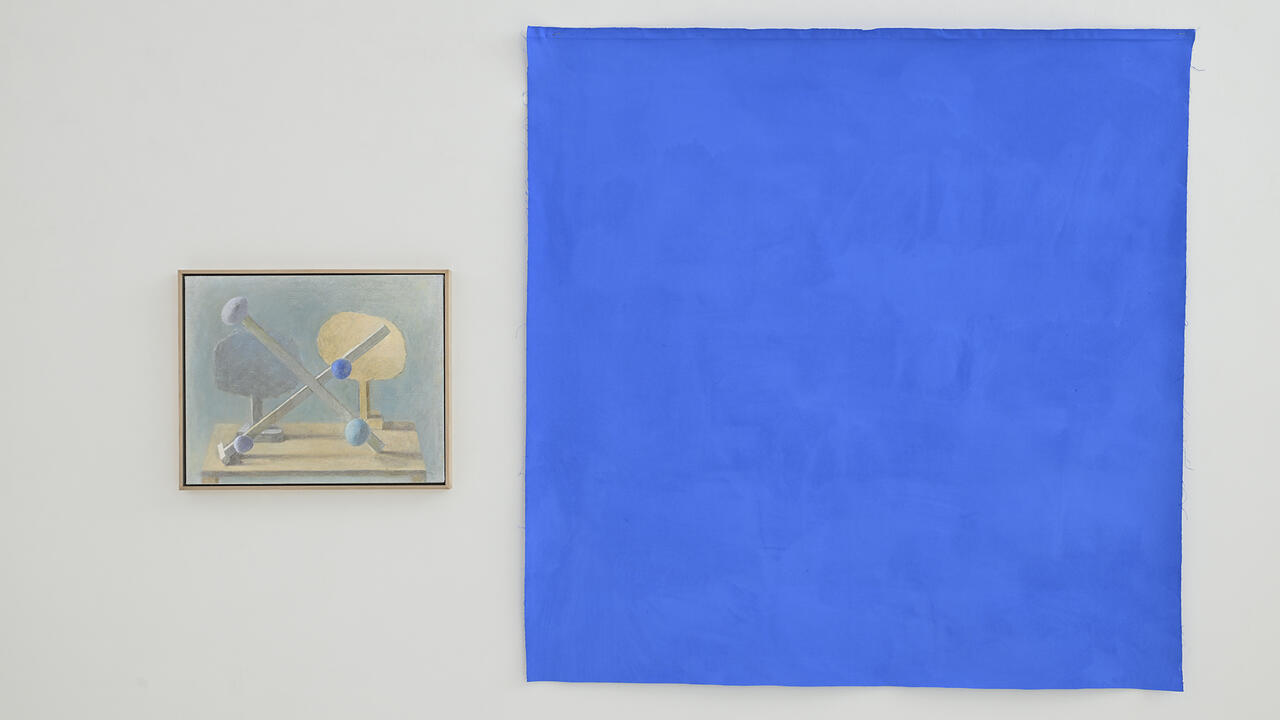Sable Elyse Smith Reveals the Carceral as Carnivalesque
At Regen Projects, Los Angeles, the artist’s multi-media works explore the similarities between entertainment and state oppression
At Regen Projects, Los Angeles, the artist’s multi-media works explore the similarities between entertainment and state oppression

In the original version of the game knucklebones, or jacks, Ancient Greek children tossed a rock into the air and tried to pick up a set of scattered astragali – sheep’s ankle bones – before it fell. The modern iteration employs a set of six-pointed plastic jacks; two such objects appear in oversized, black-and-white form at Sable Elyse Smith’s recent exhibition, ‘FAIR GROUNDS’, at Regen Projects in Los Angeles. These twin sculptures, entitled BARRIER and BARRICADE (all works 2023), are formed from conjoined prison stools, revealing the specificity of jail-oriented design – they are backless to increase inmate visibility – and hinting at the sinister side of entertainment. Smith’s multimedia artworks transform the detritus of the carceral state into contemporary spectacle, exploring the ways the American legal system morphs oppression into arcade.

The exhibition title contains an apt double meaning: ‘fair grounds’ alludes both to the enclosed site of a state fair and to the basis upon which a person might justly be put on trial. Carnivals and penitentiaries emphasize their unique social functions through architecture; Smith employs visual signifiers of prison life to warp the viewer’s perceptions of depth and size, much like circus tents do to encourage a sense of gleeful exception. Black-and-white stripes that recall the metal bars of cells extend the length of four walls, producing a disorienting optical illusion: the lines appear to wave and bend, the gallery alternately shrinking or expanding. This transportive, theatrical backdrop finds another carceral corollary in three adjacent photographic works, such as 9861 Nights, that repurpose snapshots of family members posing with inmates in front of scenic dioramas during jail visitation days.

The double entendre extends to Smith’s adaptations of children’s media, transforming educational narratives about the law into carnivalesque depictions of the justice system. One series adapts pages from a colouring book meant to explain the judicial process to kids; in Coloring Book 139, the sentences ‘ALL TYPES OF PEOPLE ARE JUDGES. THE ONLY IMPORTANT THING IS THAT THEY ARE FAIR AND HONEST’ appears next to three figures painted over to resemble clowns and ringmasters. Smith’s interventions wryly hint at police brutality, a facet of criminal persecution hidden in her source material: Coloring Book 135 shows a figure grabbing a bottle from a shelf in front of a painted bright red-and-blue target, his abdomen at the bullseye’s centre. Elsewhere, a short video, all-together-now, layers a clip from the cartoon Tom and Jerry (1940–present) over found footage of burning buildings along a darkened city street. Smith’s juxtaposition situates comic demonstrations of power (in this episode, as always, predator Tom hunts his wily prey) amongst its real consequences: the background video’s grainy quality and fiery scene recalls documentation from 2020’s nationwide protests following George Floyd’s murder by police. In Smith’s hands, the rigid structure of American law becomes a grotesque theatre, one that often masks the harm dispensed onto its subjects.

‘I’m saying “prison”,’ Smith wrote for her 2022 display at the Whitney Biennial, ‘and meaning “the world.”’ This conceptual twist is not just an artistic one: circuses, college preparatory schools and rehabilitative penitentiaries co-evolved in the US during the 19th century. The institutions share structural similarities: each offers a sequestered site intended to maximize reformative potential (in the circus, viewers were shown how not to behave) while isolating unassimilated individuals from society. Their design elements, too, appear surprisingly alike: the artist’s reconstructed stools have the rounded edges and small size of chairs found in day care centres. Smith’s renegotiations of material found in classrooms, cells and carnivals link these disparate locales, illuminating the complexity of narratives that construct and enact power in the United States. It’s hard not to imagine a large hand hovering over Regen Projects, waiting to snatch the ‘jacks’ – and us – right up.
Sable Elyse Smith, ‘Fair Grounds’, is on view at Regen Projects, Los Angeles, until 26 October.
Main image: Sable Elyse Smith, Landscape VII, 2023, neon, 180 × 575 × 6 cm. Courtesy: © Sable Elyse Smith; Regen Projects, Los Angeles





















